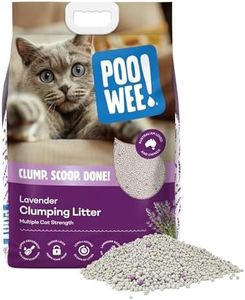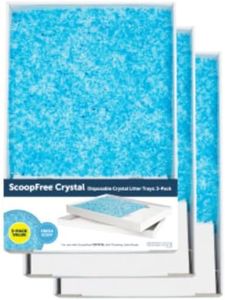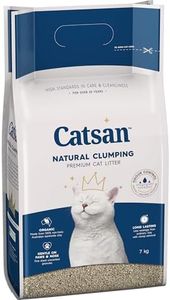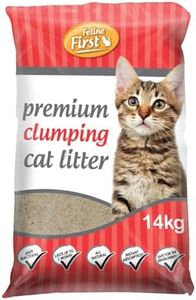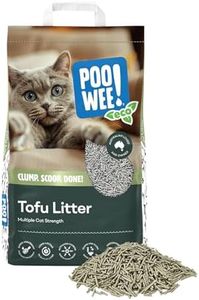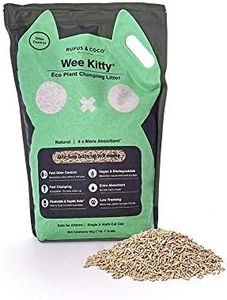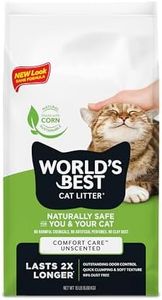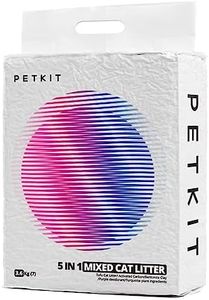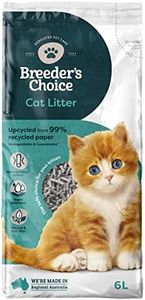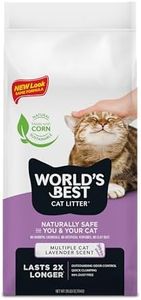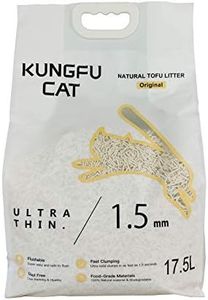We Use CookiesWe use cookies to enhance the security, performance,
functionality and for analytical and promotional activities. By continuing to browse this site you
are agreeing to our privacy policy
10 Best Cat Litters
From leading brands and best sellers available on the web.By clicking on a link to a third party's website, log data is shared with that third party.
Buying Guide for the Best Cat Litters
Choosing the right cat litter can make a big difference in both your cat's comfort and your home’s cleanliness. There are plenty of options out there, and each offers different benefits. Your goal is to get a product that matches your cat’s preferences, your cleaning routine, and any special needs like odor control or dust sensitivity. Think about what matters most in your home—whether it’s low tracking, ease of cleaning, or natural ingredients—as you compare different cat litters.Type of LitterCat litter comes in various types such as clumping clay, non-clumping clay, crystal/silica gel, biodegradable (corn, wheat, pine), and paper-based. The type affects odor control, how often you need to clean, and your cat's comfort. Clumping litters form solid lumps when wet, making them easy to scoop out, while non-clumping options absorb moisture but require more frequent full changes. Biodegradable options are more eco-friendly but may react differently to moisture and odor. If you desire quick scooping and less full-box changes, a clumping or crystal litter might be preferred. However, for an environmentally conscious choice, consider plant-based options, and if your cat has sensitivities or allergies, paper or natural options offer gentler alternatives.
Odor ControlOdor control refers to how well the litter masks or absorbs smells from your cat’s waste. Strong odor control is important for households where the litter box is in a common area or if multiple cats are present. Some litters are unscented and simply neutralize smells, while others use fragrances or baking soda to mask odors. If you or your cat are sensitive to perfumes, unscented is a safer bet. Homes with one cat usually manage with basic odor control, but multi-cat households or homes where boxes can’t be changed daily should look for maximum odor-fighting qualities.
Dust LevelsDust level measures how much fine powder is released when pouring or scooping the litter. High dust content can cause respiratory irritation for both cats and humans, and may settle on furniture. Some products are advertised as ‘low-dust’ or ‘dust-free’, making them better for people or pets with allergies. If anyone in your home has asthma or allergies, or if the litter box is in a small or poorly ventilated area, prioritize low-dust litters.
TrackingTracking describes how much litter gets stuck to your cat’s paws and ends up outside the box. Finer, lighter litters tend to track more, leaving granules on the floor. Some litters are designed with larger or heavier particles to reduce this. If keeping floors clean is a concern, or if your litter box is in a high-traffic area, look for low-tracking formulas, or consider a mat outside the litter box to catch stray pieces.
Clumping AbilityClumping refers to how well a litter binds together after absorbing moisture, making it easier to scoop out only soiled parts. Strong clumping helps keep the rest of the litter box clean and reduces how often you need to change all the litter. Non-clumping varieties absorb moisture but need to be changed entirely more often. If you want simplified, spot-clean scooping, or if you’re not able to clean the whole box frequently, a strong clumping litter is a good choice.
AbsorbencyAbsorbency tells you how much liquid the litter can soak up before reaching its limit. More absorbent litters stay drier and fresher for longer, which is especially useful for households with multiple cats. If your cat uses the box often or you can’t clean it every day, high-absorbency litters ensure better odor control and comfort for your pet.
ScentScent relates to whether the litter has added perfumes or is unscented. Scented litters can mask unpleasant odors, but some cats dislike strong smells, and some pets (or owners) might have allergies or sensitivities. If you or your cat are sensitive to smells, unscented or naturally scented litter is the way to go. Otherwise, light fragrances can help make the litter box area more pleasant.
